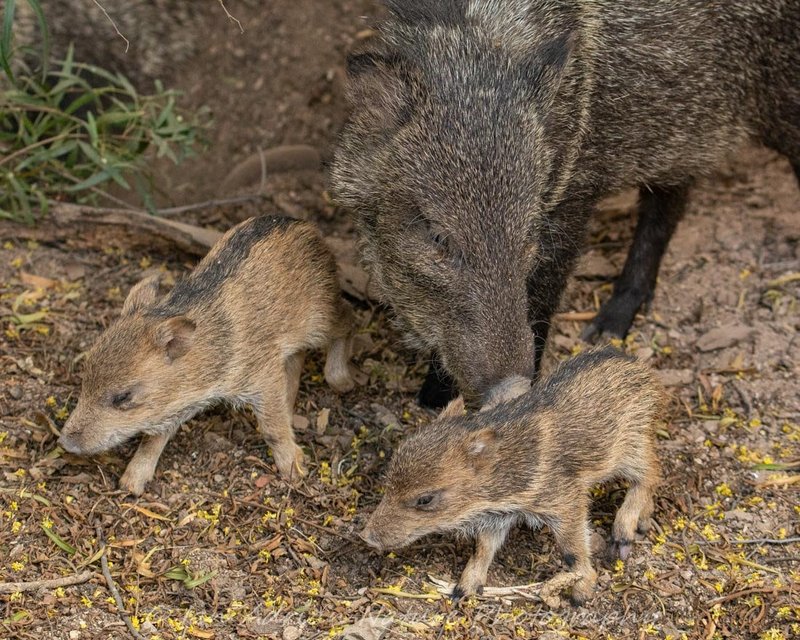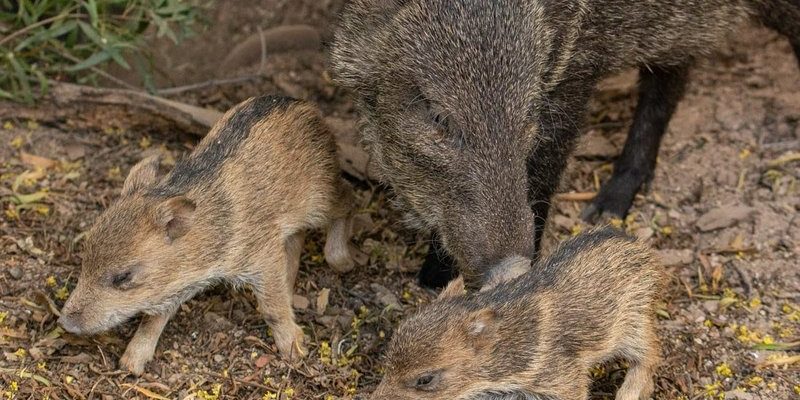
The peccary, often mistaken for a wild boar, plays a surprising role in the stories and traditions of various communities. With its strong social structures and distinctive traits, it has earned a place in the hearts and tales of many. In this exploration, we’ll unearth how the peccary is depicted in various cultures, from ancient myths to contemporary art, revealing layers of meaning that reflect humanity’s relationship with nature.
The Peccary in Indigenous Mythology
Indigenous peoples throughout the Americas have long revered the peccary, weaving it into their mythology. In many tales, the peccary symbolizes strength and resilience. For instance, certain tribes see the peccary as a guardian spirit, representing balance in nature. They believe that this creature can connect them to the earth, embodying both the fight for survival and the significance of community.
You might be wondering how these myths shape perceptions of peccaries. In some narratives, the peccary is depicted as a trickster figure. This role can serve as a reminder of the complexities of life and nature. By telling stories of the peccary’s cleverness, communities teach important lessons about adaptability and cunning—a nod to the challenges of both the natural world and human existence.
In these stories, the peccary isn’t just another animal; it becomes a symbol of perseverance in the face of adversity. When communities gather around fires to share tales, they pass down these lessons, ensuring that future generations understand their connection to this unique creature.
The Significance of Peccaries in Nature
Let’s take a moment to explore why peccaries are significant in the ecosystems they inhabit. These animals are often dubbed “keystone species,” meaning their presence is crucial to the health of their environment. They help maintain the balance of plant life by foraging for roots, fruits, and bulbs, which in turn provides food for other animals. Moreover, their behavior contributes to seed dispersal, promoting forest regeneration.
Understanding the peccary’s role in nature deepens our appreciation for its place in folklore and culture. As stories are told about them, they often highlight their ecological importance, reminding listeners of the interconnectedness of all living beings. This sense of connection can inspire respect for wildlife, urging us to consider our role in environmental stewardship.
Peccaries in Art and Literature
Beyond oral traditions, peccaries have captured the imagination of artists and writers, appearing in various forms of art and literature. From vibrant paintings that depict their lively essence to poems that reflect on their role in the wild, peccaries embody a spirit that resonates with many.
In some South American literature, their depiction serves as a metaphor for resilience. You’ll find stories where the peccary faces adversity but rises to thrive, mirroring the human struggle against challenges. These literary representations often aim to evoke empathy, prompting readers to reflect on their connection to the natural world.
Artistic representations of peccaries can also be found in cultural rituals and celebrations. Festivals that honor wildlife often feature traditional costumes or sculptures inspired by these creatures, showcasing the enduring legacy of the peccary in contemporary culture. Such expressions highlight the ongoing dialogue between humans and nature, celebrating the beauty and mystique of wildlife.
Modern Interpretations and Representations
Fast forward to today, and the peccary continues to inspire artists and storytellers, but with a modern twist. You can find them depicted in various forms of media, from environmental documentaries to animated children’s shows. These representations often aim to educate audiences about the importance of biodiversity and conservation.
Documentaries showcase the peccary’s natural behavior, providing viewers with a glimpse into their social structures and habitats. Such media not only entertain but also raise awareness about the challenges these animals face due to habitat loss and hunting. By telling their story, filmmakers invite viewers to engage with wildlife conservation efforts, bridging the gap between culture and environmental responsibility.
Children’s stories featuring peccaries often portray them as friendly, adventurous creatures, sparking curiosity about wildlife. By introducing young audiences to the peccary through engaging narratives, these stories can foster a sense of care and responsibility toward all living beings, laying the groundwork for future conservationists.
Folklore and Superstition Involving Peccaries
In various cultures, peccaries have also become associated with superstitions and folklore. For instance, some believe that spotting a peccary before a hunt can bring good luck, while others think it might symbolize a warning or challenge. These superstitions play a significant role in shaping people’s attitudes towards nature, guiding their interactions with wildlife.
In rural communities, stories about peccaries often intertwine with themes of caution and respect. People might share tales of hunters who disregarded the peccary’s wisdom, leading to misfortune. These narratives serve as cautionary tales, emphasizing the necessity of respect for nature and all its creatures. They encourage listeners to tread lightly in the wild, reinforcing the idea that nature should be treated with reverence.
Comparing Peccaries and Pigs in Folklore
When discussing peccaries, it’s interesting to compare them to their domestic relatives, pigs. While both belong to the same family, their cultural representations differ greatly. Pigs are often portrayed in tales as symbols of gluttony or stubbornness. Peccaries, on the other hand, embody qualities of community, resilience, and strength.
This contrast can provide insight into how environments shape narratives. Pigs, commonly associated with farms and domestic life, serve different roles compared to the wild peccary, which lives in herds and exhibits intriguing social behaviors. These differences in representation reflect deeper connections to the cultures and ecosystems where these animals thrive.
The peccary is a rich symbol in folklore and culture that invites us to reflect on our relationship with the natural world. From ancient myths to modern storytelling, the peccary represents resilience, community, and the complexities of life. Its presence in various forms of art and literature continues to inspire a sense of wonder and responsibility toward biodiversity.
As we explore these cultural representations, we gain insight not only into the peccary’s significance but also into our role as stewards of the environment. Each story, each myth, helps to weave the tapestry of our shared humanity and nature. So the next time you hear a tale of the peccary, remember that this quirky creature carries with it a wealth of wisdom—reminding us of the intricate connections we share with the wild.

